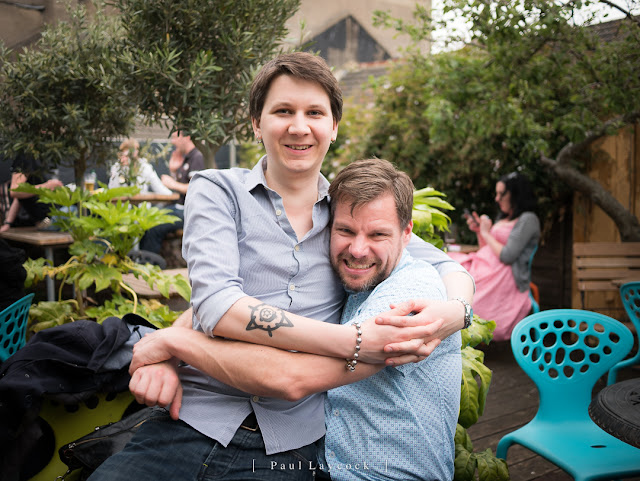Come the summer of 2015, my Olympus E-PL1 was beginning to show its age. It had served me well on a variety of jaunts across the South East of England in preparation for a big walk - the BHF London to Brighton 100k Trek. The E-PL1 joined me on this walk to, and meant that I could document the trek from start to finish.
Having switched to the GH3 at the beginning of the year though, I was getting used to better image quality and better editing latitude from the RAW files, and the old E-PL1 just didn't cut it any more. It was telling that when trying to sell the camera on eBay, I didn't get a single bid on the auction - it wasn't just me that didn't want the ancient Olympus.
I already had my eye on what I would be replacing it with. I wanted another backup camera that I could carry around with me that could also take advantage of my now-large lens collection. After struggling with the parred-back controls of the E-PL1, and the horrible Olympus user interface (no amount of Super Control Panel talk will make me change my mind), I'd already consigned any Olympus body to the "No thanks!" pile. Which left me with either the Lumix GF7 or the even smaller Lumix GM1 or GM5. Since you're reading this post, you already know what I went for!
The GM5 is better in every way than the E-PL1. Better sensor, better build quality, better controls, better user interface, faster SD card read/write speeds, better LCD and with touchscreen, Full HD video, quicker auto-focus, more auto-focus points, faster burst, a control dial, and to top it all off, a built-in electronic viewfinder.
The only places it is deficient is in flash-sync speed and a lack of IBIS - though none of my main bodies had sensor-based stabilisation at that point either.
The GM5 really is a marvel of modern electronics. The amount of technology that Panasonic managed to squeeze into such a small body. Much like holding a film rangefinder, it demands to be picked up. And though the buttons are a bit of a squeeze on the back, I rarely find myself hitting the wrong button. The inclusion of the EVF makes the GM5 ever so slightly taller than the earlier GM1, and though it isn't the brighter, biggest or sharpest EVF out there, it is useful in bright sunshine to compose your scene.
It has been a while since I've been on a multi-mile walk, so nowadays my GM5 is mainly used for home photography and social events. The 16 megapixel sensor in there is more than happy dealing with ISO2000, and at a push, double that.
My advice - if you can find a GM5, buy it. It is a lovely little camera, compelling even, and you'll be amazed at just what can be accomplished from the tiny powerhouse.
Panasonic Lumix GM5
August 2015 to Now
4200+ shots
August 2015 to Now
4200+ shots
Having switched to the GH3 at the beginning of the year though, I was getting used to better image quality and better editing latitude from the RAW files, and the old E-PL1 just didn't cut it any more. It was telling that when trying to sell the camera on eBay, I didn't get a single bid on the auction - it wasn't just me that didn't want the ancient Olympus.
I already had my eye on what I would be replacing it with. I wanted another backup camera that I could carry around with me that could also take advantage of my now-large lens collection. After struggling with the parred-back controls of the E-PL1, and the horrible Olympus user interface (no amount of Super Control Panel talk will make me change my mind), I'd already consigned any Olympus body to the "No thanks!" pile. Which left me with either the Lumix GF7 or the even smaller Lumix GM1 or GM5. Since you're reading this post, you already know what I went for!
The GM5 is better in every way than the E-PL1. Better sensor, better build quality, better controls, better user interface, faster SD card read/write speeds, better LCD and with touchscreen, Full HD video, quicker auto-focus, more auto-focus points, faster burst, a control dial, and to top it all off, a built-in electronic viewfinder.
The only places it is deficient is in flash-sync speed and a lack of IBIS - though none of my main bodies had sensor-based stabilisation at that point either.
The GM5 really is a marvel of modern electronics. The amount of technology that Panasonic managed to squeeze into such a small body. Much like holding a film rangefinder, it demands to be picked up. And though the buttons are a bit of a squeeze on the back, I rarely find myself hitting the wrong button. The inclusion of the EVF makes the GM5 ever so slightly taller than the earlier GM1, and though it isn't the brighter, biggest or sharpest EVF out there, it is useful in bright sunshine to compose your scene.
It has been a while since I've been on a multi-mile walk, so nowadays my GM5 is mainly used for home photography and social events. The 16 megapixel sensor in there is more than happy dealing with ISO2000, and at a push, double that.
My advice - if you can find a GM5, buy it. It is a lovely little camera, compelling even, and you'll be amazed at just what can be accomplished from the tiny powerhouse.
| Goodwood | South Downs |
| South Downs | Saltdean |
| South Downs | Brighton |
| Brighton | Brighton |
| Brighton | |
| Royal Albert Hall | |











Comments
Post a Comment